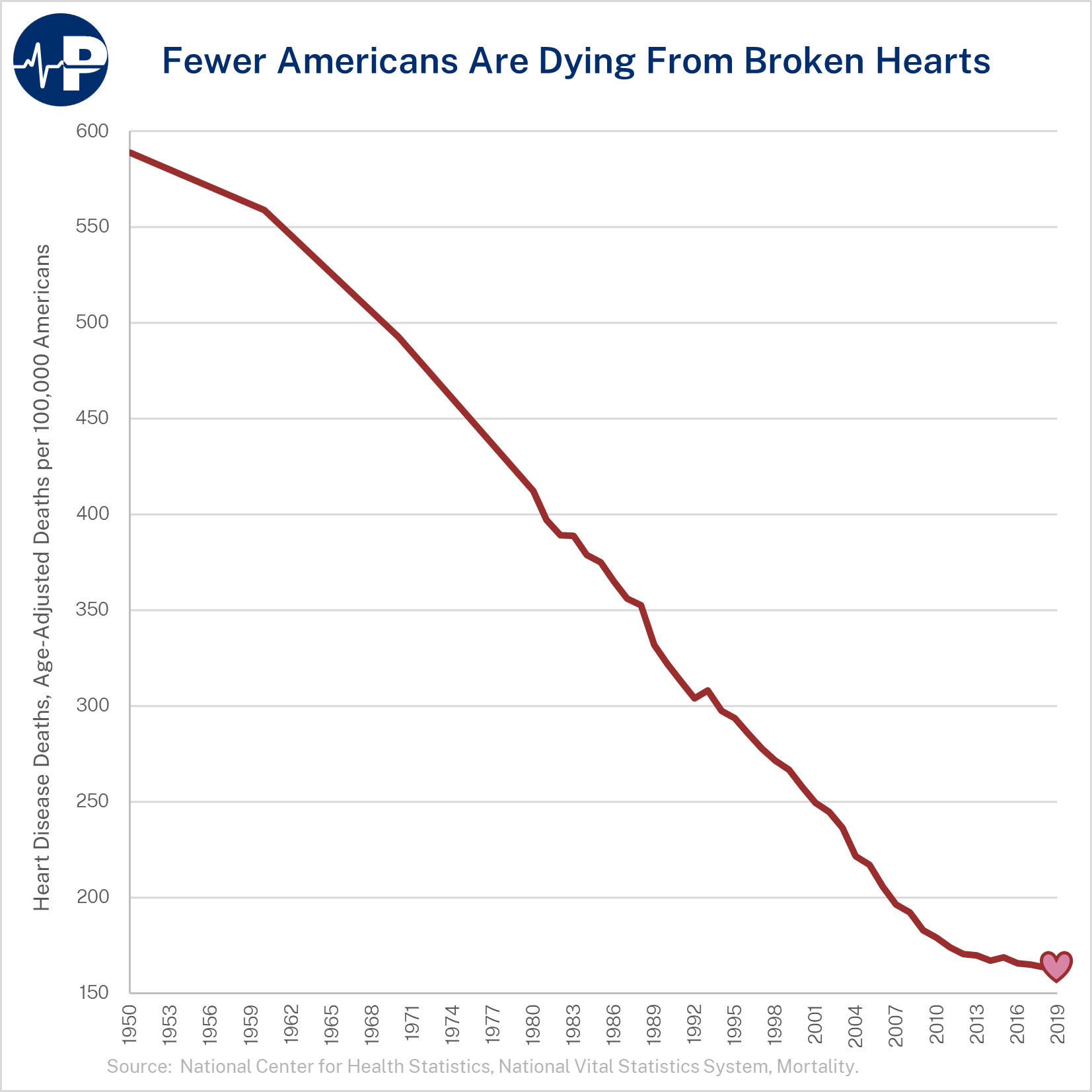Happy Valentine’s Day! Today, I highlight some very encouraging news about heart health in the United States. Before that, I highlight some sobering news about the country’s finances and the cost pressures from government health care programs. But first, I want to invite you to an important event Paragon is hosting on the Hill next week.
#1 Fiscal Challenge: Federal Health Care Spending
On Monday, National Review published a piece from Drew Gonshorowski and me on the key health policy takeaways from the Congressional Budget Office’s new Budget and Economic Outlook. CBO’s topline projection: Federal debt as a percentage of gross domestic product (GDP), or the size of the American economy each year, will reach a record amount in 2028 and continue to skyrocket thereafter. Here are the main takeaways:
(1) Federal health care programs are the one area of non-interest expenditures that continues to increase as a share of the economy.
(2) Net-interest payments will explode as a share of GDP, becoming the primary government expense in about 25 years.
(3) Social Security stabilizes as a percent of GDP, albeit at a high level.
(4) As federal health care programs and net interest crowd out other priorities, every other major government-spending category — like national defense — will become a significantly smaller portion of spending.
Over the next decade, total federal health care expenditures will approach $25 trillion. In a paper published by Paragon Health Institute one year ago, Economic Policy Innovation Center president and budget guru Paul Winfree estimated that federal expenditures needed to be trimmed by about 7.5 percent to return the federal budget back to a sustainable path. This translates into about a $1.8 trillion reduction relative to baseline projected expenditures over the next decade. Paragon has released a roadmap of reforms to Medicare and Medicaid that policymakers should consider to reduce spending pressure from federal health programs.
Here is our conclusion in National Review: “It’s past time for Washington to get serious about massive annual budget deficits and rising levels of debt. Without significant policy change, more and more of the government’s annual budget will consist of interest payments; government borrowing will crowd out private investment; future interest rates, inflation, and taxes will be higher; and American’s standard of living will decline. American families deserve better.”
The National Review piece has four figures that illustrate the situation.
Fewer Americans Are Dying From Broken Hearts
On Valentine’s Day, this week’s Paragon Pic gushes over one of the greatest advancements in America’s health history. As the figure below shows, U.S. heart disease death rates have fallen dramatically, from 589 deaths per 100,000 in 1950 to 162 deaths per 100,000 in 2019—a stunning 72.6 percent drop.

If you had trouble viewing the Paragon Pic, click here.
Much of this decline is from advances in medical treatment and prevention. In 1960, the first bypass surgery was performed. In 1977, the first coronary angioplasty to open narrowed or blocked coronary arteries was performed. In 1988, the first coronary stent was used, improving the angioplasty procedure’s durability. Drugs, such as statins to lower cholesterol and angiotensin-converting enzyme inhibitors and calcium channel blockers to treat hypertension, entered the market. These innovations occurred alongside a precipitous drop in Americans smoking, which significantly improved health.
In a 2019 paper in Health Affairs, economist David Cutler and coauthors highlighted that this trend resulted in reduced spending growth for those in Medicare — a reduction of $1,629 per person — for cardiovascular diseases which includes heart disease and cerebrovascular diseases that share the same risk factors. Cutler et al. attributes about half of this spending slowdown to the increased use of medications to treat and control the three major risk factors for cardiovascular disease: hypertension, high cholesterol, and diabetes.
Of course, the societal benefits vastly exceed the savings to Medicare. Studies show that while half the deaths prevented can be attributed to disease treatments and half to preventive strategies that reduce risk factor levels, changing risk factors actually adds 65 percent to a different metric, “life-years-gained.” That is because avoiding deaths in people younger than 65 adds more life years than avoiding deaths in older people.
One of the greatest gifts we can receive is more quality time with loved ones. The innovations that have improved the prevention and treatment of cardiovascular disease have helped society in profound ways, an important fact to remember on the day dedicated to time with loved ones.
Congress Cites Paragon Pic
During a January 31st Energy & Commerce Committee hearing, Representative Diana Harshbarger (R-TN) referenced Paragon’s Pic showing that government’s mandatory health care spending now exceeds the entire United States discretionary budget. Hear her tee up our work here. We hope that Paragon Pics will be part of many more congressional hearings.
All the best,
Brian Blase
President
Paragon Health Institute



